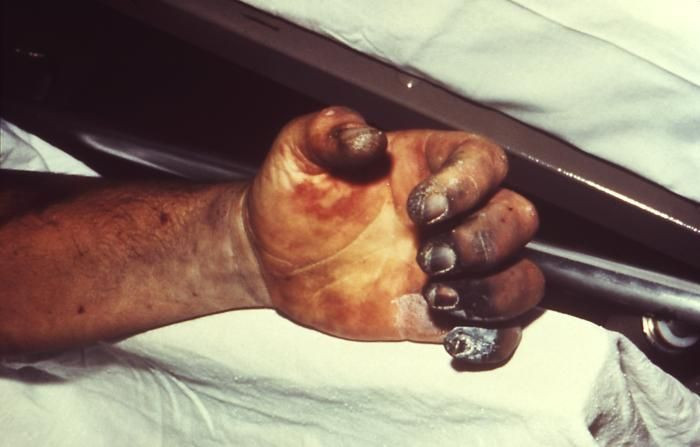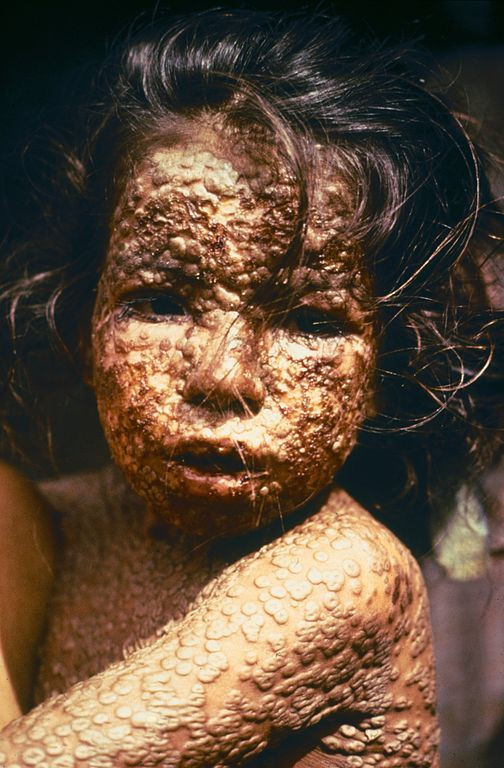Deadliest Diseases: 3 Of The World's Most Terrifying Illnesses — And You Thought Ebola Was Bad

Ebola is currently raging through West Africa at an unstoppable pace. Since March, when the first cases of the virus were reported, it has gone on to infect 6,553 people, of whom 3,083 are now dead. It’s suspected that the disease can infect up to 1.4 million by January if health experts don’t figure out a way to control it. The World Health Organization (WHO) says that the outbreak is “the largest and most complex Ebola outbreak since the Ebola virus was first discovered in 1976.”
The outbreak is so bad that flights to the affected countries have been restricted, health experts are using experimental vaccines never before used on humans, and locals are rioting out of fear. Ebola strikes fear in people all around the world, and there’s no reason it wouldn’t. It first appears as many other infections — with headaches, sore throats, and fevers — and then quickly turns a person’s immune system against the body’s organs, causing blood vessels to explode, and internal and external bleeding.
With so much attention on the Ebola outbreak, it made us over here at Medical Daily wonder, what other diseases are so terrifyingly deadly? Here are four in no particular order.
The Black Death
Now known as the plague, this outbreak of disease was so deadly that classrooms across the U.S. still learn about it. It all began in 1347, when 12 Genoese trading ships returned from a journey through the Black Sea, according to History Channel. Italians had long heard about a “Great Pestilence” hailing from the East (China, India, Persia, and Egypt), but by the time they learned it had arrived on their shores, it was too late. The rats and fleas carrying the disease, caused by the bacteria Yersinia pestis, had already left the boats and begun infecting Italians.
From Italy it spread to other parts of Europe, including Paris and London, through the air just as much as pests. Italian poet Giovanni Boccaccio described its most apparent symptom best, saying, “In men and women alike, at the beginning of the malady, certain swellings, either on the groin or under the armpits… waxed to the bigness of a common apple, others to the size of an egg, some more and some less, and these vulgar named plague-boils.” Pus and blood would come out of these boils, and other symptoms like fever, headache, chills, and weakness would also emerge. Death came quick.

Unknowing of how to stop the disease — medical science hadn’t advanced enough; one doctor thought it traveled through “the aerial spirit escaping from the eyes of the sick man” — people began believing they were being punished by God for their sins. Some groups lashed out at others (like Jews), killing thousands of people in an effort to “cleanse” the population. Others became part of a cultish group known as flagellants, who beat themselves and others with heavy, metal studded leather straps in public.
By the time the plague started to subside in the 1350s, about 60 percent of the European population had been killed, according to the Centers for Disease Control and Prevention (CDC). It still infects between 1,000 and 2,000 people each year, with 95 percent of cases in sub-Saharan Africa.
Smallpox
Quite possibly the worst disease known to man, according to CBS News, Smallpox killed about 500 million people between 1880 and 1980, when it became the first disease ever to be eradicated from Earth. Before then, the virus, which is called either Variola major or Variola minor, had been around for at least 10,000 years, passing exclusively between humans through the air — specifically through tiny drops of saliva.
From there, it caused a high fever and body aches, which led to the appearance of a rash (this was when they were most contagious), and then the most obvious sign, small, pus-filled boils. These turned into scars if the person survived, but for the 30 percent who died, their deaths were met with the appearance of lesions in their eyes, mouths, and other bodily openings. These lesions eventually blackened, peeled off, and emitted a strong odor now known as “smallpox smell.”

The disease affected everyone, from European and Asian royalty to common folk. When Europe began conquering the New World, the West became infected as well. During the French and Indian War, the British deliberately contaminated blankets with smallpox, and then gave them to Native Americans, 50 percent of whom died as a result.
A vaccine was first developed by English country doctor Edward Jenner, who noticed in 1796 that people working on the farm weren’t getting smallpox after contracting the less-ominous cowpox. So, he decided to infect a boy with pus from a woman with cowpox, and then six weeks later, infected him with pus from someone with smallpox. He never became sick. Since then, smallpox vaccines were developed and used until the virus’ eradication. The vaccines, which are also considered highly dangerous, aren’t used anymore, but are still held Health Departments in certain parts of the world — governments worry about terrorist groups using smallpox as a biological weapon. The CDC, however, could do a better job of containing its vaccines.
HIV/AIDS
The AIDS epidemic seemed to have appeared out of thin air, first being reported in an issue of the CDC’s Morbidity and Mortality Weekly Report, which reported on a lung infection between five young, previously healthy gay men from Los Angeles. Within days, doctors from San Francisco, New York, and all across the country called the CDC about similar cases. By the end of 1981, there were 270 cases of severe immune deficiency in gay men, with 121 of them dead.
Unsure of what was infecting these normally healthy men, the virus sent the country into a frenzy. Gays were discriminated against, the CDC was trying to figure out how it was transmitted, and more cases were being reported every day. In 1982, the CDC first used the term AIDS, and released the first case definition, calling AIDS a “disease at least moderately predictive of a defect in cell-mediated immunity, occurring in a person with no known case for diminished resistance to that disease.”
The next few years saw major growth in HIV/AIDS organizations, which banded together to find the mode of transmission, and to determine what it was doing to humans and how best to fight it. Since then, they discovered that it’s transmitted through only certain bodily fluids, such as semen, blood, rectal fluid, vaginal fluids, and breast milk.
An infected person typically experiences symptoms like severe flu within the first month of infection, a precursor condition to HIV that’s known as acute retroviral syndrome. From there, they go on to a period of latency in which the virus amasses an army of cells that, in time, will begin to destroy the immune system. Once they start doing this, they not only infect the immune system’s T-cells, but also force them to create new viruses.
There is no cure for HIV/AIDS, and although there are drugs to manage it, going off them will quickly result in the virus rebounding. As the immune system becomes weaker, the patient begins to experience rapid weight loss, recurring fever, fatigue, long-term swelling in the lymph glands, sores in the mouth and genitals, pneumonia, red or purple blotches under their skin or in their mouth, memory loss, depression, and other neurological disorders. Oftentimes, people who die from AIDS end up getting sick from infections that take advantage of their weak immune systems.
Globally, 75 million people are infected with HIV, and about 36 million have died from it. According to the World Health Organization, 1.6 million people died of AIDS-related illness in 2012 alone. Although being diagnosed with HIV/AIDS was once considered a death sentence, that’s no longer the case, as treatments allow patients to live relatively normal lives. Passing the virus along, however, is extremely easy, and for that, campaigns promoting safe sex have been widespread and will continue to be until a cure is found.
Published by Medicaldaily.com



























